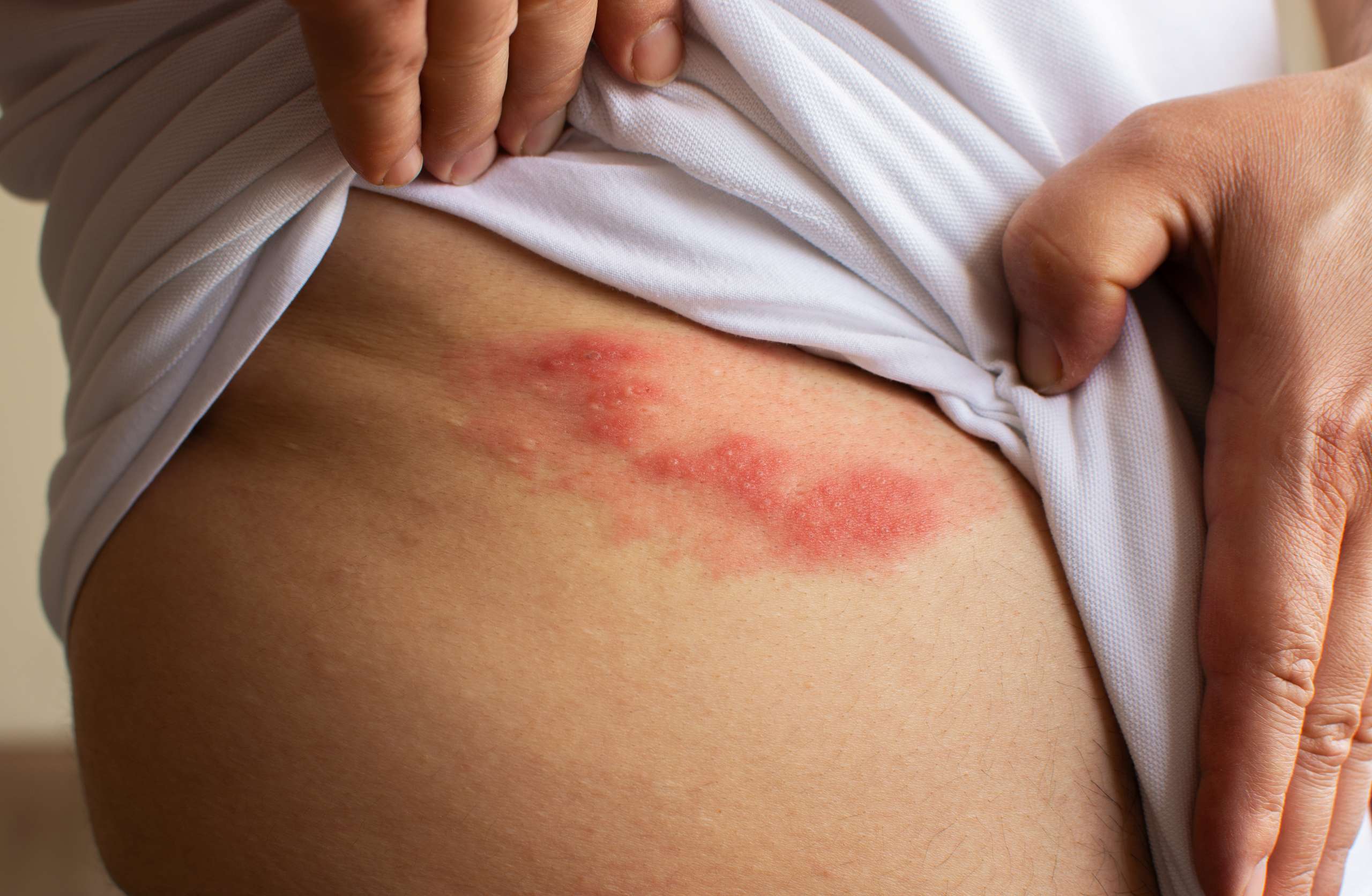At DermDox, we specialize in providing comprehensive and personalized rash treatments tailored to each patient’s specific needs. Rashes can be caused by a wide range of factors, including allergies, infections, irritants, or underlying medical conditions. Our experienced dermatologists are dedicated to accurately diagnosing the underlying cause of the rash and developing effective treatment plans to alleviate discomfort, reduce inflammation, and promote rapid healing.
Our approach to rash treatment at DermDox emphasizes evidence-based therapies and advanced techniques to address various types of rashes. Whether the rash is caused by contact dermatitis, eczema, fungal infections, or other skin conditions, our dermatologists employ a combination of topical medications, oral prescriptions, lifestyle recommendations, and tailored skincare routines to manage and resolve the rash. We prioritize patient education, ensuring individuals understand the triggers, preventive measures, and long-term care necessary to maintain healthy and rash-free skin. With a patient-centered focus, DermDox is committed to providing compassionate care, empowering individuals to regain confidence in their skin’s health, and offering relief from the discomfort associated with rashes.
Frequently Asked Questions
Identifying a rash can be challenging, as many different skin conditions can present with similar symptoms. However, there are some key factors and characteristics you can observe to help you identify the rash and provide useful information to a healthcare professional for an accurate diagnosis:
Appearance: Note the color, texture, and pattern of the rash. Rashes can be red, pink, brown, or even purplish. They might appear as raised bumps, blisters, pustules, scales, or flat red patches. Some rashes have distinct shapes or patterns, such as ring-shaped rashes in ringworm infections.
Location: Take note of where the rash is located on your body. Certain rashes have specific predilection sites. For example, eczema often appears on the inside of the elbows and knees, while contact dermatitis might be limited to areas exposed to irritants or allergens.
Itching or Pain: Consider whether the rash is itchy, painful, or causing any discomfort. Itching is common in many skin conditions, including allergic reactions and insect bites.
Duration: Determine how long the rash has been present. Acute rashes might indicate an allergic reaction or viral infection, while chronic or recurrent rashes could be related to underlying skin conditions like eczema or psoriasis.
Triggers: Reflect on any potential triggers or changes in your routine, such as new skincare products, exposure to specific substances, recent travels, or encounters with plants or animals. Allergies or irritants could be causing the rash.
Other Symptoms: Consider whether you have any accompanying symptoms, such as fever, joint pain, or flu-like symptoms. These additional symptoms can provide valuable clues about the underlying cause of the rash.
Medical History: Take into account your medical history, including any existing skin conditions, allergies, or chronic illnesses. Some rashes might be related to underlying health issues.
While these observations can help you describe the rash to a healthcare professional, it’s essential to consult a dermatologist or a healthcare provider experienced in dermatology for a proper evaluation. Dermatologists can conduct a thorough examination, potentially perform skin tests, and use their expertise to diagnose the rash accurately. Remember, self-diagnosis based solely on online information can be unreliable and might lead to incorrect conclusions.
Determining whether a rash is serious requires considering several factors, including the rash’s appearance, accompanying symptoms, duration, and your overall health. Here are some signs that a rash might be serious and warrant prompt medical attention:
Sudden Onset or Rapid Spread: If a rash appears suddenly and spreads rapidly, it could indicate a severe allergic reaction, infection, or even a potentially life-threatening condition like meningitis. Seek immediate medical help in such cases.
Fever: If the rash is accompanied by a high fever, especially in combination with other symptoms like headache, joint pain, or sore throat, it could be a sign of a systemic infection that requires medical evaluation.
Painful or Tender Rash: A rash that is painful, tender to touch, or accompanied by blisters could be a sign of a serious skin infection, such as cellulitis or shingles. These conditions often require medical treatment, including antibiotics.
Difficulty Breathing or Swelling: If the rash is accompanied by difficulty breathing, swelling of the face, lips, tongue, or throat, it could indicate a severe allergic reaction (anaphylaxis). This is a medical emergency requiring immediate attention.
Rash with Petechiae or Purpura: Petechiae are tiny red or purple spots that appear on the skin, indicating bleeding under the skin. Purpura refers to larger purple or red patches. These can be signs of serious conditions such as meningococcal infection or clotting disorders and should be evaluated urgently.
Rash in a Child with Other Symptoms: If a child has a rash along with symptoms like high fever, lethargy, irritability, or difficulty waking up, it could be a sign of a serious illness like meningitis or sepsis. Seek medical attention immediately.
Painful Blisters in a Specific Pattern: Painful blisters in a specific pattern, especially around the mouth, eyes, or genital area, could indicate herpes infection. Prompt medical evaluation and antiviral treatment are essential.
Rash in a Child with Stiff Neck: If a child has a rash along with a stiff neck and a fever, it could be a sign of meningitis. Seek immediate medical attention.
When in doubt or if you are concerned about a rash, it’s best to err on the side of caution and seek medical advice.
The best thing to put on a rash depends on the underlying cause of the rash and its specific symptoms. Here are some general guidelines for managing rashes:
Keep the Area Clean and Dry: Gently cleanse the rash with mild soap and water, then pat it dry. Keeping the area clean can prevent further irritation and infection.
Avoid Irritants: Identify and avoid potential irritants or allergens that could be exacerbating the rash. This may include certain fabrics, fragrances, lotions, or skincare products.
Topical Moisturizers: For dry or itchy rashes, applying fragrance-free moisturizers or emollients can help soothe the skin. Look for products containing ingredients like ceramides or colloidal oatmeal, which can provide relief.
Cool Compress: Applying a cool, damp cloth or compress to the affected area for 10-15 minutes can help reduce itching and inflammation. Avoid hot water, as it can worsen irritation.
Over-the-Counter (OTC) Creams: For mild rashes, over-the-counter hydrocortisone creams (1%) can help reduce redness and itching. Use them as directed and avoid prolonged use without medical supervision.
Antihistamines: Non-drowsy oral antihistamines like cetirizine (Zyrtec) or loratadine (Claritin) can help relieve itching associated with allergic rashes. Consult a healthcare professional before taking any medications, especially for children.
Avoid Scratching: Although it may be difficult, try to avoid scratching the rash, as this can worsen the irritation and potentially lead to infection.
Prescription Medications: If the rash is severe, persistent, or associated with other symptoms, it’s important to consult a healthcare provider, preferably a dermatologist. They can prescribe appropriate topical or oral medications tailored to the specific condition.
Remember, these are general recommendations, and it’s essential to consult a healthcare professional for proper evaluation and personalized treatment, especially if the rash is severe, persistent, or accompanied by concerning symptoms.
As an adult, you should be concerned about a rash and seek medical attention in the following situations:
Sudden Onset or Rapid Spread: If the rash appears suddenly and spreads rapidly, especially if it’s accompanied by fever or other symptoms, it could be a sign of a serious allergic reaction or infection. Seek immediate medical help.
Painful or Tender Rash: If the rash is painful, tender to touch, or if it’s accompanied by blisters, it could be a sign of a serious skin infection, such as cellulitis or shingles. These conditions often require medical treatment, including antibiotics.
Persistent or Worsening Rashes: If the rash doesn’t improve with over-the-counter treatments within a few days, or if it worsens, it’s important to consult a healthcare professional, preferably a dermatologist. Some underlying skin conditions, such as eczema, psoriasis, or allergic reactions, may require specific prescription treatments.
Rash with Systemic Symptoms: If the rash is accompanied by fever, chills, joint pain, headache, or other systemic symptoms, it could indicate an underlying infection or a more serious condition. Seek medical attention promptly.
Rash in Specific Areas: Rashes in certain areas of the body, such as the face, genitals, palms, or soles of the feet, can be concerning and may require medical evaluation. For example, a rash in the groin area could be a sign of a fungal infection, while a rash on the face might be related to an allergic reaction or a skin condition like rosacea.
History of Allergies or Chronic Skin Conditions: If you have a history of allergies, eczema, psoriasis, or other chronic skin conditions, any changes in your skin, such as new rashes or worsening symptoms, should be evaluated by a dermatologist.
Rash in Immunocompromised Individuals: If you are immunocompromised due to conditions like HIV/AIDS, cancer, or undergoing immunosuppressive therapy, even a mild rash should be evaluated promptly, as your immune system may not respond as effectively to infections or other skin conditions.
Personal Concern or Discomfort: If the rash is causing you significant discomfort, itching, or distress, or if you are concerned about its appearance, consult a healthcare provider. Even if the rash seems minor, addressing your concerns with a medical professional can provide peace of mind and appropriate guidance.
When in doubt, it’s always best to consult a healthcare professional, preferably a dermatologist, for proper evaluation and guidance regarding any concerning rash. Early diagnosis and appropriate treatment can help manage the rash effectively and prevent potential complications.



